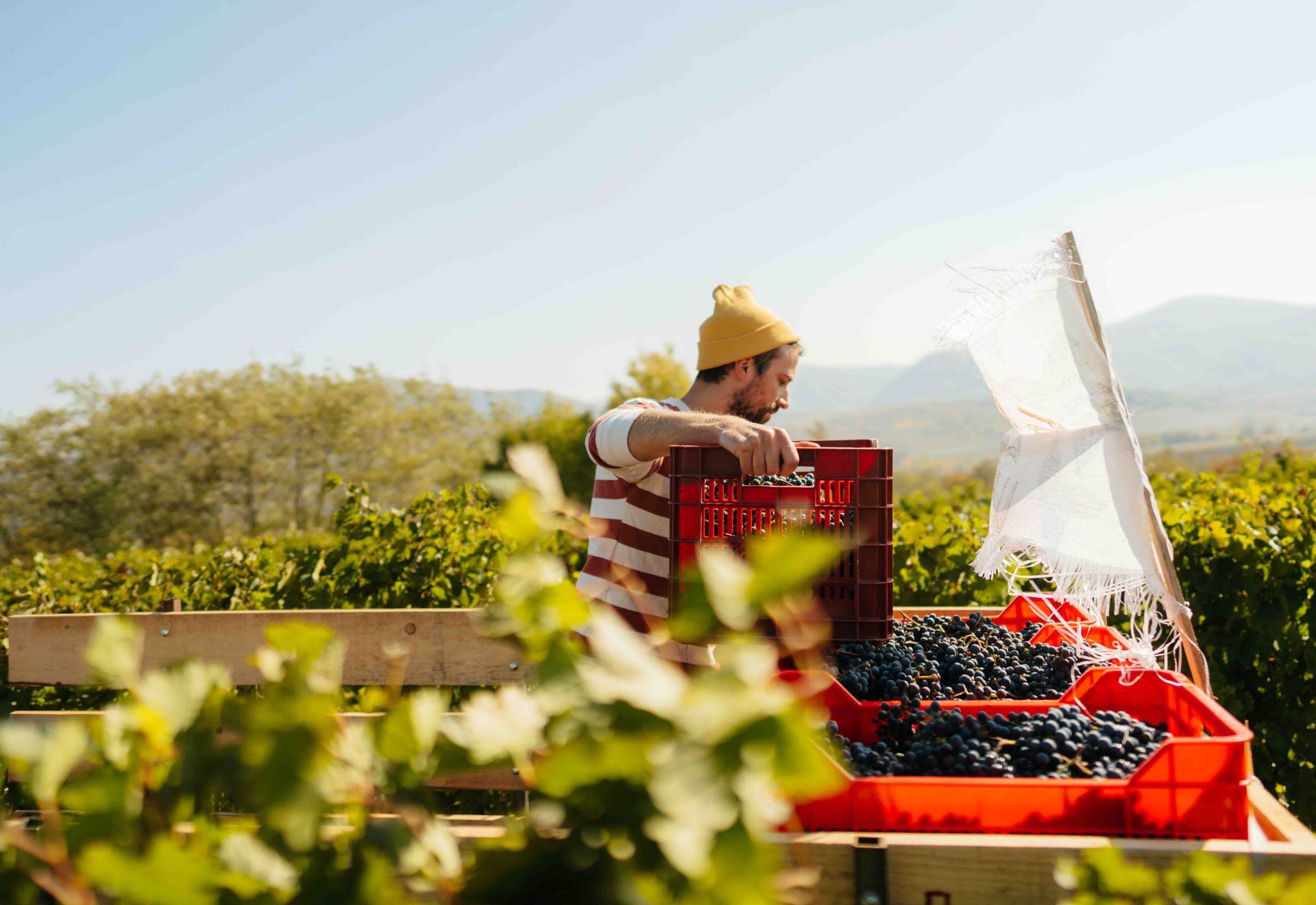Vintage is an incredibly busy time for the wine industry, when production peaks and wineries and producers need to be primed for harvest and winemaking. And though the 2022 Vintage might seem far away, preparation will be key when it comes to making the most of the season.
A large part of this, of course, will involve hiring and onboarding new staff to ensure there are enough employees to handle the additional workload. However, a unique set of circumstances from last Vintage and this year have created the “perfect storm”, which will make sourcing enough employees challenging. Above all, this means early preparation will be hugely important for wine industry employers.
We take a look at some of these factors and discuss how employers can act now to enhance their traditional hiring strategy to find and create alternative streams of talent.
An industry facing a significant labour shortage
More than one-third of peak seasonal jobs on farms and wineries are typically filled by overseas workers, according to the Australian Bureau of Agricultural and Resource Economics and Sciences. But with the cessation of overseas travel, the pandemic has resulted in a significant and drawn-out labour shortage for Australia’s wine industry.
This issue was prevalent last year, with wineries reporting the need to redeploy staff from cellar doors and hospitality venues to the vineyards and production to ensure grapes could be harvested and crushed. Employers in the wine industry can take important learnings away from the experiences of 2020 and, armed with the knowledge of a known labour shortage, do all they can to prepare themselves for the Vintage ahead.
For many wineries it can be beneficial to partner with a professional recruitment company that is skilled in hiring staff specifically for the wine industry’s Vintage season. As professional recruiters for the wine industry and with offices strategically located across Australia’s key wine regions, Acclaimed Workforce can quickly and reliably source and onboard staff, including pickers, forklift drivers, cellar hands and general labourers, for your Vintage season.
Lack of international travel means skills are in short supply
Ed Milne, National Manager of Acclaimed Workforce, says the lack of international travel has resulted in more than just a labour shortage, but also a skills shortage.
“Australia’s wine industry relies quite significantly on skilled overseas workers,” he says. “What usually happens is that once graduates complete their Oenology degree in Europe, they move from harvest to harvest. This means they are often two, three or even four harvests into their career by the time they reach Australia.
“This makes them highly sought after because of their level of experience and ability to perform multiple tasks. It’s a skill set that can be challenging for wine employers to replace.”
With heavy restrictions on international travel unlikely to ease before the 2022 Vintage, it will be crucial for employers to not only understand how many additional workers they will need, but also which skills they may fall short of. By identifying these requirements early, employers will have a better chance of sourcing the skill needed to put them in good stead for Vintage.
Unemployment rates at all-time low
In June this year, Australia’s unemployment rate dropped to its lowest in over a decade, adding yet another challenge for wine employers needing staff for Vintage. Though Australian workers typically make up a smaller portion of the Vintage workforce, their labour is still essential in ensuring grapes are harvested.
According to official Bureau of Statistics data, the unemployment rate fell to just 4.9 percent and has been declining for the last eight months. However, this is significantly lower in many regional areas. Ed Milne says this, coupled with the restrictions on international and national travel, has created the perfect storm that is unlikely to ease before the Vintage season.
“If you add it up, the industry is short tens of thousands of backpackers who would normally be working on Vintage. And now with unemployment rates so low, the available talent across all wine regions is even more diminished,” he says. “Competing for the highest skill sets and the best talent won’t be the biggest challenge anymore. Just securing enough workers to complete Vintage successfully will be difficult enough. That’s why preparing early will be crucial.”
Training and pre-employment programs
For Australians who are seeking work, an issue with employability is often their lack of entry-levels skills that are specifically required for roles in the wine industry. Entry level training requirements often include safety, manual handling, dangerous goods and confined spaces training, for example. Furthermore, there is a significant lack of forklift drivers throughout the wine regions, which is a skill required by many employers.
One way employers can combat this and make the most of the job seekers who are available to them, is to implement pre-employment training programs well ahead of Vintage. This means that by January, there will be a larger talent pool from which to source trained and qualified staff. Acclaimed Workforce creates and implements such training programs, with recent success being achieved at De Bortoli Wines in the Riverina.
“We are helping wine industry employers across multiple regions to build government-funded pre-employment training programs to create a new source of qualified talent for the wine industry, who can competently and safely perform their duties,” Ed says. “We’re recommending that employers begin their pre-employment training programs now to help attract people with limited experience, so there are available trained workers by the time Vintage rolls around.”
As specialist recruiters to the wine industry and with the capacity to develop pre-employment training programs that are tailored to our clients, Acclaimed Workforce can help you make the most of your 2022 Vintage. Contact us today, or register your staffing requirements here.



